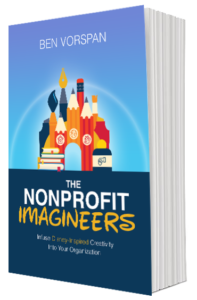Walt Disney Imagineering is the creative division of The Walt Disney Company that is responsible for designing and developing Disney theme parks, resorts, and attractions around the world. One of the key principles of Imagineering is the use of “weenies” to guide guests through a theme park or attraction. As we discussed in The Nonprofit Imagineers, a “weenie” is a visual or auditory element that serves as a landmark or beacon, helping guests navigate the space and guiding them towards their destination. At Disney theme parks, the castle is a prominent weenie that draws guests from the front entrance to the hub, before continuing on to their land of choice. This principle can be applied to the nonprofit world to help organizations guide donors and supporters towards their mission and goals.
In the nonprofit world, a “weenie” can take many forms, such as a powerful image, a compelling story, or a catchy slogan. The key is to create something that will capture the attention and imagination of donors and supporters, and lead them towards the organization’s mission and goals.
For a wonderful example of a nonprofit organization using the “weenie” principle effectively we can look to Charity: Water. The organization’s mission is to provide clean and safe drinking water to people in developing countries. To guide donors towards this goal, they have created a powerful visual “weenie” in the form of their signature blue jerry can. This simple but powerful image represents the need for clean water in developing countries, and serves as a symbol of hope and progress towards Charity: Water’s mission. The jerry can is used in various forms of communication, from their website to their social media accounts, to help donors navigate towards their mission and goals.
Another example of a nonprofit using the “weenie” principle is the American Cancer Society. Their “weenie” is the iconic daffodil, which represents hope and progress in the fight against cancer. The daffodil is used as a visual element in various forms of communication, from their website to their fundraising campaigns, to guide donors towards the organization’s mission and goals.
The “weenie” principle can also be applied to nonprofit events. For example, the Susan G. Komen Race for the Cure uses a visual “weenie” in the form of pink ribbons to guide participants towards the event’s mission of raising awareness and funds for breast cancer research. The pink ribbon is used as a visual landmark throughout the race course, helping participants navigate the space and reminding them of the organization’s mission and goals.
In addition to visual elements, storytelling can also serve as a powerful “weenie” for nonprofits. By sharing compelling stories about their work and the impact it has on the communities they serve, nonprofits can guide donors and supporters towards their mission and goals. For example, Save the Children uses storytelling to guide donors towards their mission of improving the lives of children in need around the world. Through their website and social media accounts, they share stories of children they have helped and the impact their work has had on their lives.
How can the Walt Disney Imagineering “weenie” principle be applied to your nonprofit to guide donors and supporters towards your organization’s mission and goals?
 Celebrate 2 years of Imagineering!
Celebrate 2 years of Imagineering!
Comments are closed